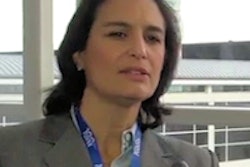Bucking a negative assessment from its own appointed review panel, the U.S. Centers for Medicare and Medicaid Services (CMS) on Monday approved CT lung cancer screening for Medicare recipients, saying the evidence is sufficient to justify screening high-risk individuals until the age of 74 years.
As a preventive services benefit under Medicare, today's decision allows a patient to enter a CT screening program only after undergoing a mandatory lung cancer screening, counseling, and shared decision-making visit with his or her physician, CMS said in a November 10 statement.
The proposed decision is a major victory for patient advocates, as lung cancer is the largest cause of cancer mortality in the U.S., killing more than 160,000 people per year.
Screening is already included for eligible individuals in private health plans under terms of the U.S. Affordable Care Act (ACA), but Medicare had held off approval for the screening of Medicare patients pending a long review that began a year ago and ends, advocates hope, with today's proposed decision that must still be finalized by CMS.
"This has been a long time coming," said Laurie Fenton Ambrose, president and CEO of the screening advocacy group Lung Cancer Alliance. "Today's CMS decision should put to rest any question regarding levels of evidence and benefit. The time is now to move forward expeditiously in bringing the lifesaving benefit of lung cancer screening to those at risk -- including our seniors. We are confident that the progress we have seen in the technology, protocols, and the ability of radiologists to detect lung cancer at its earliest stage will translate into tens of thousands of lives saved."
Today's decision is "a watershed moment and game changer for the face of lung cancer as we know it," said Dr. Ella Kazerooni, chair of the American College of Radiology (ACR) Lung Cancer Screening Committee and ACR Thoracic Imaging Panel. "CT lung cancer screening is the first and only cost-effective test proven to significantly reduce lung cancer deaths. Medicare coverage provides access to care for seniors and will help physicians save thousands of lives each year from the nation's leading cancer killer."
Screening nuts and bolts
To be eligible, screening participants must be 55 to 74 years of age, be asymptomatic with no signs or symptoms of lung disease, have a tobacco smoking history of at least 30 pack-years, and either smoke currently or have quit within the past 15 years, CMS said in its decision memo. On the physician side, radiologists performing the exam must be board-certified, accredited, and experienced in lung cancer screening interpretation. And the scans must deliver 1.5 mSv or less of radiation.
Reflecting concerns that the procedure maintain the high standards practiced in the National Lung Screening Trial (NLST), centers that screen patients must either have participated in previous lung cancer screening trials or be an accredited advanced diagnostic imaging center with training and experience in low-dose CT screening, CMS said.
Patient criteria
The patient eligibility criteria mirror those used in NLST, which screened more than 53,000 smokers and in 2010 reported a mortality reduction of 20% when lung cancers were detected with CT and treated.
To be screened, patients must have a written order for low-dose CT lung cancer screening following a counseling and shared decision-making visit with a physician or physician assistant, nurse practitioner, or clinical nurse specialist.
The required evaluation and shared decision-making visit must have the following elements:
- Determination of eligibility based on age, absence of symptoms of lung cancer, calculation of cigarette smoking pack-years, and if the individual quit smoking, the number of years since quitting
- Shared decision-making must include the use of "one or more decision aids" to include the benefits and harms of screening, follow-up diagnostic testing, overdiagnosis, false-positive rates of screening, and total expected radiation exposure
- Counseling on the importance of adhering to the annual screening protocol and the impact of comorbidities, and an assessment of the patient's ability willingness to undergo diagnosis and treatment
- Counseling on the importance of continued abstinence if the person is a former smoker, or of quitting smoking if a current smoker; may include additional help in the form of Medicare-reimbursed tobacco cessation counseling services, if appropriate
Written orders for subsequent annual screening rounds must contain date of birth, the number of pack-years of smoking, current smoking status or number of years since quitting, and a statement that the beneficiary is asymptomatic, as well as the national provider identifier (NPI) of the ordering practitioner.
Furthermore, practitioners must collect and submit data to a CMS-approved national registry for each low-dose CT lung cancer screening exam they perform, CMS said.
Radiologist requirements to perform the exam include certification from the American Board of Radiology or equivalent organization, documented training in diagnostic radiology and radiation safety, and involvement in the supervision or interpretation of at least 300 exams, along with documented participation in continuing medical education per ACR standards, CMS said.
More information on the decision is available here. To comment on the proposed decision during the next 30 days, click here.
The U.S. Preventive Services Task Force (USPSTF) recommended lung cancer screening with a grade of "B" for adults ages 55 to 80 who meet the NLST criteria. CMS narrowed coverage to those individuals ages 55 to 74, ACR noted in a statement.
"We look forward to widespread clinical implementation over the next year and educating the public about the role of this lifesaving test in managing their health," Kazerooni said. "We strongly advise older current and former heavy smokers to speak with their doctors about whether CT lung cancer screening is right for them. If they and their doctor decide that screening is warranted, we encourage patients to seek out an ACR lung cancer screening center."
Gail Rodriguez, executive director of the Medical Imaging and Technology Alliance (MITA), commended CMS for its decision to screen long-term smokers.
"Research shows that low-dose CT scans for individuals at high-risk of lung cancer could save up to 20,000 lives per year," Rodriguez said in a statement. "Given that lung cancer is the leading cause of cancer deaths, implementation of annual ... scans will improve outcomes through early detection and drive down treatment costs. We encourage CMS to finalize this proposal so that Medicare beneficiaries can reap the benefits of this invaluable technology."
"Finally, the lifesaving CT screening will be made available to older smokers who are at the highest risk of lung cancer, particularly those who could not afford to pay for it before," said Dr. Claudia Henschke, PhD, professor of radiology at the Icahn School of Medicine at Mount Sinai. "Congratulations to CMS for the decision to cover the test. It has been 20 years in the making."




















